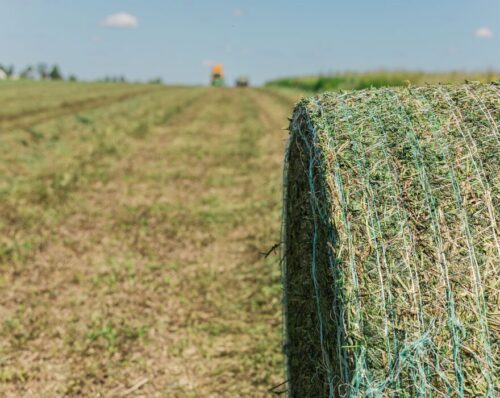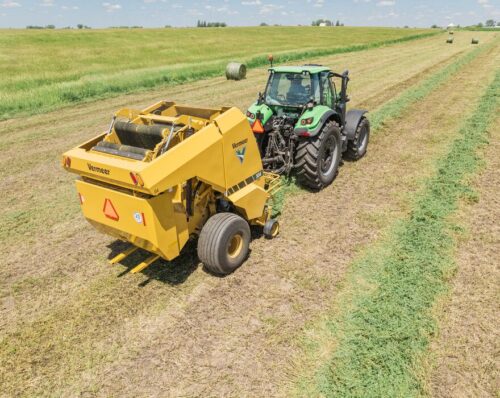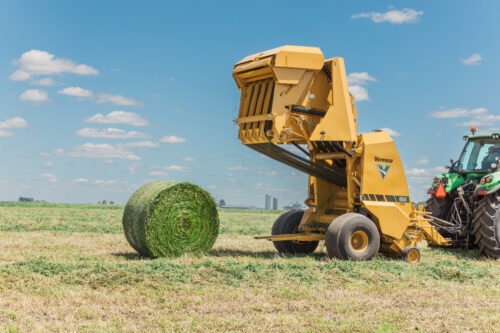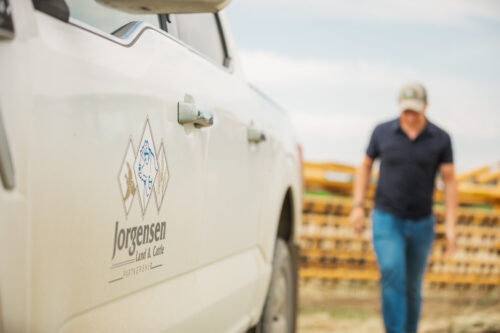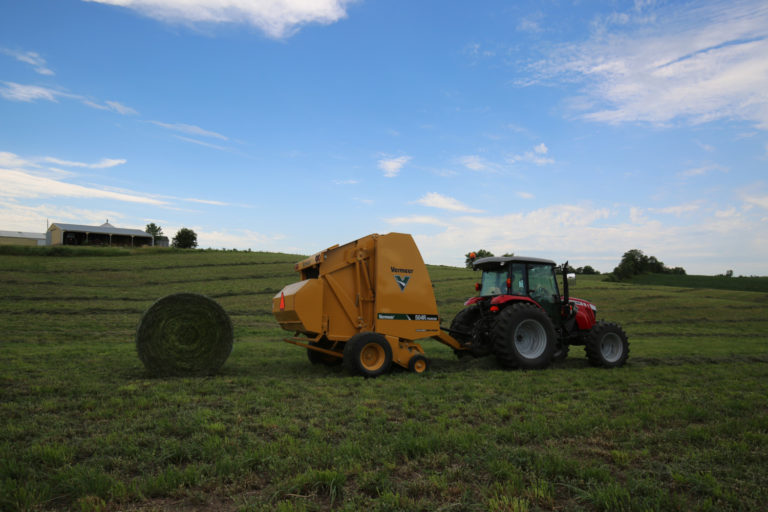
Bust these 5 Myths about making baleage or baled silage
May 2021
Baleage, or baled silage, can provide livestock producers with a high-quality feed source. Making baleage adds flexibility to the haymaking process by enabling producers to widen fieldwork time windows.But despite those and other benefits, there are some myths and misconceptions about baleage. We’re going to dispel five of the most common myths about high-moisture forage.
Myth No. 1: My hay is going to spoil.
When making baleage, the crop is ideally cut at moisture levels between 45% and 55%, then baled and wrapped in anywhere between 6 and 8 millimeters of plastic wrap within roughly 24 hours of cutting. That’s the key combination; the plastic wrap helps prevent the oxygen infiltration that directly leads to spoilage in baled silage.
If you’ve harvested in the optimal crop moisture range, and then baled and wrapped your baleage following best practices, you’ll likely be able to store it for long periods of time without worrying about spoilage while facilitating optimal fermentation.
Myth No. 2: My cattle won’t like it.
One of the benefits of making baleage for cattle is its palatability. Once ensiled and adequately fermented, it provides a good mix of protein, moisture and acidity that’s highly digestible. These qualities contribute to its palatability and make baled silage a feedstock your cattle will likely prefer over dry hay.
“By removing and packaging hay so it’s safe from potential weather damage, a lot of nutrients will be conserved and saved and made available to the animals,” Universityof Nebraska Extension Forage Specialist Bruce Anderson said. “The fiber content of the hay has a lot to do with how animals can consume it and how palatable it is to them.” Read more from Anderson on baleage palatability.
Myth No. 3: Making baleage is too expensive
Baled silage can be of higher quality than dry hay. When comparing the two based on relative feed quality (RFQ), the value of baleage harvested within the optimal time window is $26.46 per ton of dry matter greater than comparable dry hay. That translates to a $40- to $104-per-cow winter feed cost savings when accounting for the optimal balance of crude protein and energy baleage of high-moisture hay over dry hay.
Baling and wrapping silage at higher moisture levels helps you cut down on storage losses by preventing oxygen infiltration that leads to spoilage and maximize the crop’s value, given the benefits of that moisture to long-term storage viability. And since wrapped baleage can be stored outdoors year-round, it eliminates the need for a barn or building compared to dry hay.
Myth No. 4: I have to have a bale chopper to feed baled silage.
Depending on how you feed your herd, you don’t always need to chop baleage. If you’re feeding it alone, chopping —or pre-cutting — isn’t normally a necessity. But if you’re integrating it into a vertical mixer with a total mix ration, you may want to consider adding or buying a baler with pre-cutting capabilities to help reduce waste. And if you are pre-cutting, it’s can be justifiable from a cost standpoint when considering the feeding efficiency.
Myth No. 5: I have to have a certain crop to make baleage.
You can make baleage from a number of crops based on your location. Cool-season grasses and legumes, brassicas and warm-season perennial crops all are likely candidates for baleage production. Consult a local forage agronomist and take into account your location, weather and soil pH, or other specific growing conditions, to determine which crop mix will work best for making baleage. Here are just a few examples:
- Cool-season annual grasses: ryegrass, oats, wheat, rye and triticale
- Cool-season legumes: red, white, arrowleaf, alfalfa and crimson clover
- Warm-season annual grasses: forage sorghum, sudangrass, sorgum/sudan and millet
- Warm-season annual legumes: alyce clover, cow peas and forage soybeans
- Brassicas: turnips, kale and forage rape
More baleage resources
If you have questions about how you can integrate baleage, or baled silage, into your operation, here are additional resources to help you make an informed decision:
- High-moisture forage advantages
- The benefits to making baleage
- Baleage is not just for dairies
- Baleage the “hottest thing in haymaking”
- The baleage advantage (over dry hay)
This article contains third-party observations, advice or experiences that do not necessarily reflect the opinions of Vermeer Corporation, its affiliates or its dealers. Individual results may vary based on care and operation of machine and crop and field conditions, which may adversely affect performance. Vermeer Corporation reserves the right to make changes in engineering, design and specifications; add improvements; or discontinue manufacturing at any time without notice or obligation. Equipment shown is for illustrative purposes only and may display optional accessories or components specific to their global region. Please contact your local Vermeer dealer for more information on machine specifications. Vermeer and the Vermeer logo are trademarks of Vermeer Manufacturing Company in the U.S. and/or other countries. © 2021 Vermeer Corporation. All Rights Reserved.

